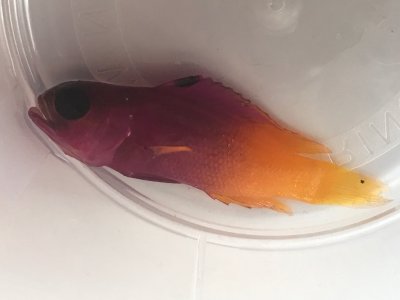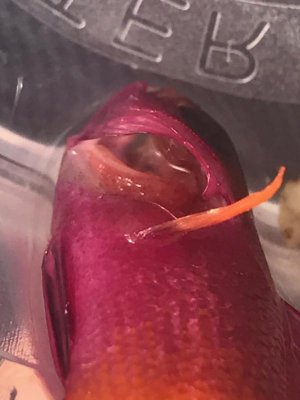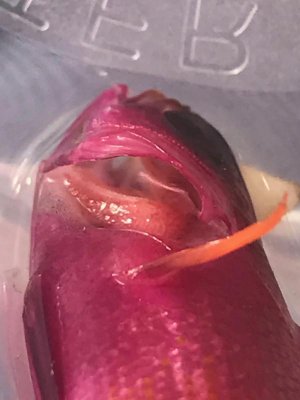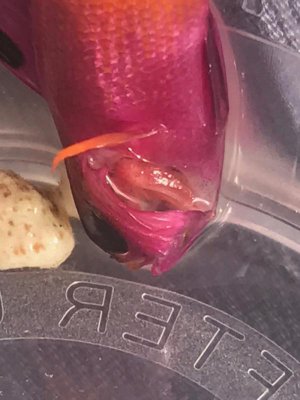This is my first tank and my first 3 fish.
The first fish (Abbey a dot-dash wrasse) was obviously breathing heavy a few days after entering the tank. I don't know if I didn't notice before that or if it wasn't happening. It didn't look like any external issues with the fish but I neglected to check the gills. It took about a week maybe more from the time I noticed the breathing to the fish dying. I didn't take pictures. Was in a bit too much shock.
The moment I saw Corduroy or Houdini (royal grammas) breathe funny I started treating the tank with prazipro. This was a few days ago. Flukes was my best guess based on the appearance of Abbey (nothing obvious external), but it didn't help. Might have made things worse. Treating in a QT wasn't an option (yes, it's the first thing on my list to buy, and QT/pre-treat every single thing first.)
I also did some large water changes. RO/DI water, mixed and heated... etc.
I think Corduroy died today (hard to tell when I can't see them next to each other). I took pictures. Outside doesn't look like any of the regular illnesses like ich, or velvet. Just looks like a fish to me. I don't know what gills normally look like so I took pictures.
There is a good chance Houdini is dead in the rock work. I haven't seen/found him yet.
Can someone identify what the problem might have been?
Thank You.
The first fish (Abbey a dot-dash wrasse) was obviously breathing heavy a few days after entering the tank. I don't know if I didn't notice before that or if it wasn't happening. It didn't look like any external issues with the fish but I neglected to check the gills. It took about a week maybe more from the time I noticed the breathing to the fish dying. I didn't take pictures. Was in a bit too much shock.
The moment I saw Corduroy or Houdini (royal grammas) breathe funny I started treating the tank with prazipro. This was a few days ago. Flukes was my best guess based on the appearance of Abbey (nothing obvious external), but it didn't help. Might have made things worse. Treating in a QT wasn't an option (yes, it's the first thing on my list to buy, and QT/pre-treat every single thing first.)
I also did some large water changes. RO/DI water, mixed and heated... etc.
I think Corduroy died today (hard to tell when I can't see them next to each other). I took pictures. Outside doesn't look like any of the regular illnesses like ich, or velvet. Just looks like a fish to me. I don't know what gills normally look like so I took pictures.
There is a good chance Houdini is dead in the rock work. I haven't seen/found him yet.
Can someone identify what the problem might have been?
Thank You.




